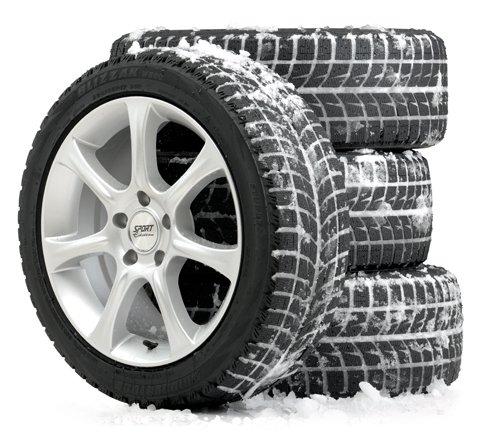 People often ask us, when is the best
time to switch from all-season to winter tires. Is it
November 1st, Thanksgiving, the first snow fall or some other
date? The answer is none of the above. The best time to
install winter tires is based on outdoor temperature. Once
the average daily temperature is consistently below 45 degrees
Fahrenheit (or 7 degrees Celsius), it’s time to switch.
People often ask us, when is the best
time to switch from all-season to winter tires. Is it
November 1st, Thanksgiving, the first snow fall or some other
date? The answer is none of the above. The best time to
install winter tires is based on outdoor temperature. Once
the average daily temperature is consistently below 45 degrees
Fahrenheit (or 7 degrees Celsius), it’s time to switch.
The primary reason is that in cold temperatures, all-season tires become rigid, less pliable and therefore less effective in gripping the surface. Pliability is an essential feature in winter tires. Winter tires are made from softer rubber compounds that retain their flexibility in cold weather, allowing the tire to better conform to the surface of the road. In fact, in temperatures of 45 degrees or less, winter tires will increase vehicle stability regardless of road conditions. All-season and performance tires tend to get hard and brittle in cold temperatures – providing less traction. As a result, winter tires keep a better grip on snowy and icy surfaces than regular tires. A Motortrend.com study concludes that “modern winter tires can provide up to 20 percent better snow traction than an all-season design.”
It’s always best to replace all four tires with winter tires because differences in tire size, traction and wear can negatively affect a car’s handling. The Tire Industry Association states “in order to maintain performance and stability, winter/snow tires must be installed on all four wheel positions on front-wheel drive vehicles.”
We’ve posted several videos illustrating the effectiveness of winter tires compared to all-season tires.
It’s also important to check and maintain proper tire pressure more frequently in winter months. For every 10 degrees Fahrenheit the temperature drops, your tires can lose about 1 pound per square inch (PSI) of pressure. The pressure can also be affected by an increase in temperature variance during the day. In other words, if it’s below zero at night and almost 40 degrees during the day – your tire pressure may fluctuate a small amount depending on when you adjusted them. Since it is generally recommended to keep your tires within 5 PSI of the recommended pressure, it becomes more important in winter to check your tires regularly.
If you are on researching or looking for winter tires, you’ll want to make certain that you select a tire branded with the mountain/snowflake symbol. This will assure you have the very best winter traction offered. If you have any questions about winter tires or driving safety, please feel free to call or stop by one of the convenient Dunn Tire locations.
